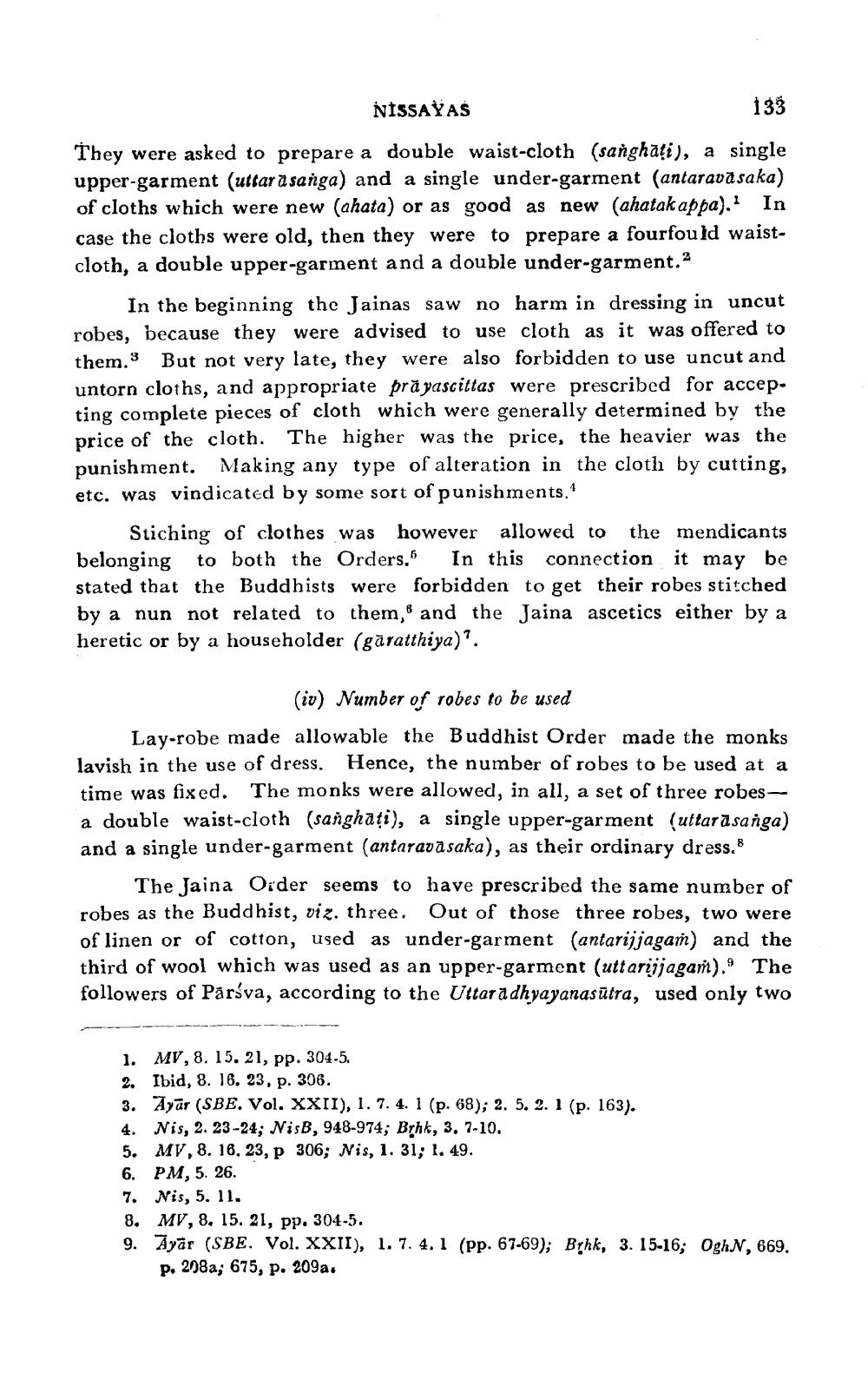________________
NISSAYAS
133
They were asked to prepare a double waist-cloth (sanghati), a single upper-garment (uttar a sanga) and a single under-garment (antaravā saka) of cloths which were new (ahata) or as good as new (ahatak appa). In case the cloths were old, then they were to prepare a fourfould waistcloth, a double upper-garment and a double under-garment.
In the beginning the Jainas saw no harm in dressing in uncut robes, because they were advised to use cloth as it was offered to them. But not very late, they were also forbidden to use uncut and untorn cloths, and appropriate prayascittas were prescribed for accepting complete pieces of cloth which were generally determined by the price of the cloth. The higher was the price, the heavier was the punishment. Making any type of alteration in the cloth by cutting, etc. was vindicated by some sort of punishments."
Stiching of clothes was however allowed to the mendicants belonging to both the Orders. In this connection it may be stated that the Buddhists were forbidden to get their robes stitched by a nun not related to them, and the Jaina ascetics either by a heretic or by a householder (gäratthiya)?.
(iv) Number of robes to be used Lay-robe made allowable the Buddhist Order made the monks lavish in the use of dress. Hence, the number of robes to be used at a time was fixed. The monks were allowed, in all, a set of three robesa double waist-cloth (sanghati), a single upper-garment (uttara sanga) and a single under-garment (antaravā saka), as their ordinary dress.
The Jaina Order seems to have prescribed the same number of robes as the Buddhist, viz. three. Out of those three robes, two were of linen or of cotton, used as under-garment (antarijjagam) and the third of wool which was used as an upper-garment (uttarijjagań). The followers of Paráva, according to the Uttaradhyayanasūtra, used only two
1. MV, 8. 15. 21, pp. 304-5. 2. Ibid, 8. 16. 23, p. 306. 3. Ayar (SBE, Vol. XXII), 1. 7. 4. 1 (p. 68); 2. 5. 2. 1 (p. 163). 4. Nis, 2. 23-24; NisB, 948-974; Brhk, 3, 7-10. 5. MV, 8. 16.23, p 306; Nis, 1. 31; 1. 49. 6. PM, 5. 26. 7. Nis, 5. 11. 8. MV, 8. 15. 21, pp. 304-5. 9. Ayar (SBE. Vol. XXII), 1. 7. 4. 1 (pp. 67-69); Brhk, 3. 15-16; OghN, 669.
p. 298a; 675, p. 209a.




